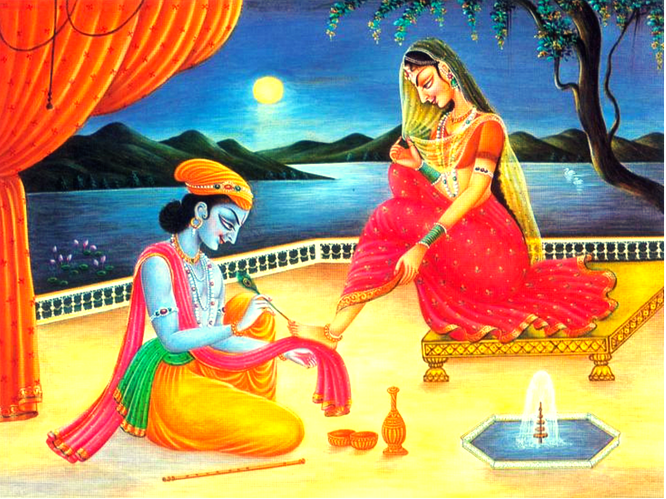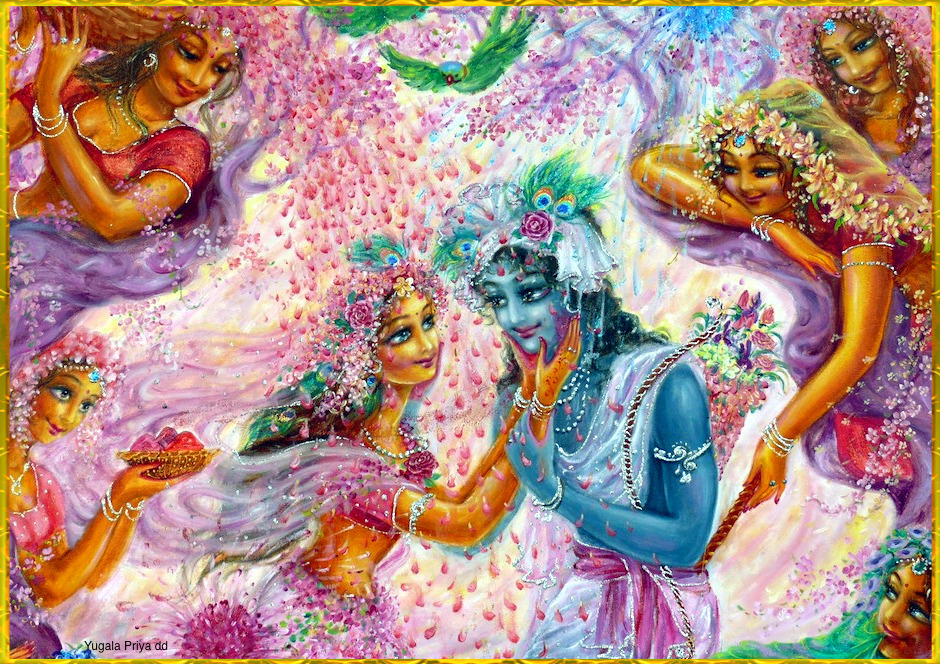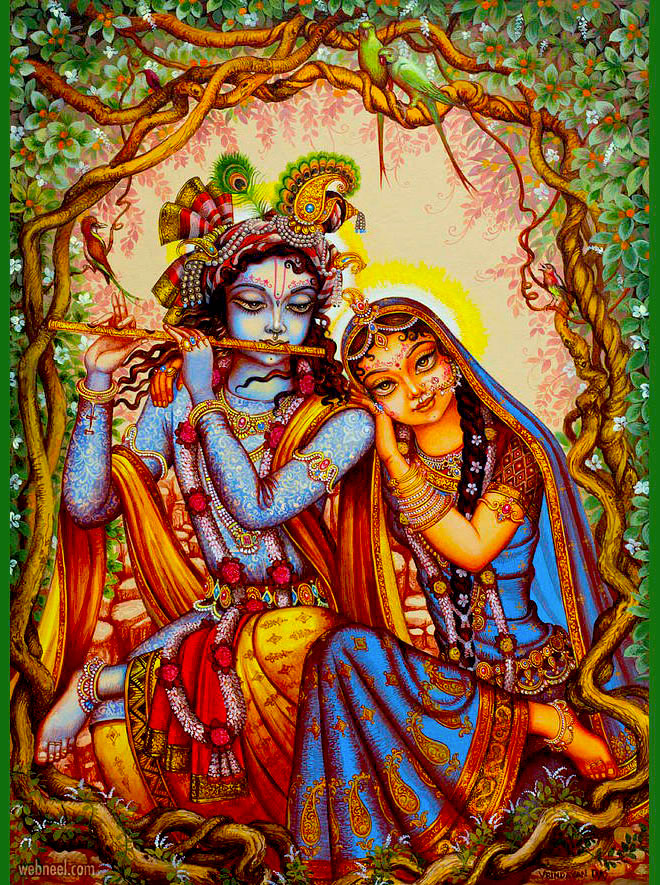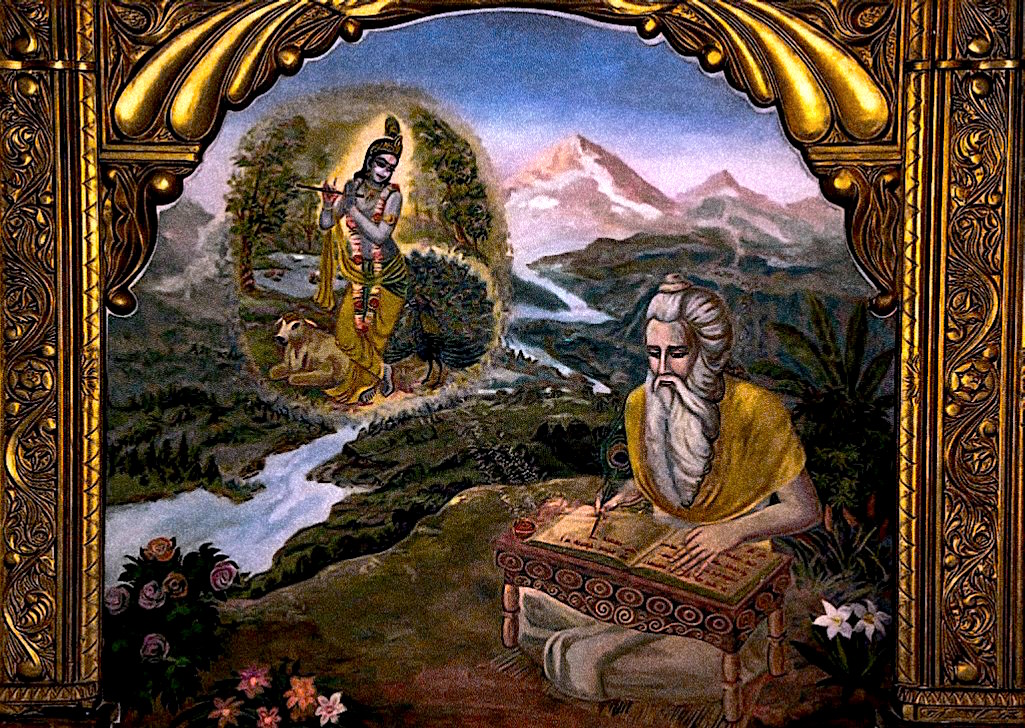Mahanidhi Madan Gopal Das
This series of posts will present facts (tattva) regarding the identity, moods (gopi-bhava), intimacy and sevas of Srimati Radharani’s beautiful and talented handmaidens known as manjaris, kinkaris, or dasis.
Also we will present many astonishing and wonderful lilas to highlight the manjaris most personal and confidential sevas to Srimati Radhika and Her dearest Priyatama Shyamasundara.
The information here is based on the commentaries of Advaitavamsa Acharya 108 Sri Ananda Gopala Goswami and 108 Sri Ananta Dasa Babaji Maharaja taken from “Vilapa Kusumanjali” and “Radha Rasa Sudhanidhi” translated by Sri Advaita Dasji.
Manjari Tattva: Separation in Vraja Bhajan
When the mind is very agitated by feelings of separation from Radha and Krishna the loving devotee may feel helpless or unfortunate, unable to see an end to it. However, when accomplished devotees experience strong feelings of love-in-separation from Radharani, they sometimes get a vision, sphurti, of Srimati which helps them stay alive. Then there’s no end to the bliss one feels in being close to the beloved again!
This constant succession of meeting and separation from Srimati Radhika puts the devotee in an indescribable condition. The pain of separation becomes so severe that it wipes the remembrance of the just-experienced bliss of union out of the mind. In such a condition only another such vision can keep the devotee alive. This is the specialty of the love of Vraja and it is the great treasure of the Vraja-rasa-upasaka.
Manjari Tattva: Acquaintance with Radhika
Can the devotee continue if one does not even get slightly acquainted with Radharani? How can we advance towards someone we have never seen, who is beyond our purview?
Such a devotee laments, “I could not get acquainted with Swamini Radha who is everything to me! I never even think of the maidservice of Sri Radha, to whom my merciful Guru has introduced me! My bodily consciousness is so strong, everything is averse to the mood I desire! What a waste of life if I don’t even get slightly acquainted with Radhika who makes even the supreme master of all material and spiritual worlds faint just by casting a single sidelong glance at Him!
“Yet at the same time I am drawn towards Radharani’s lotus feet by a strong desire to reach them. O Swamini! If You just once stay in my thoughts or in my dreams, then I will be consoled! Please respond, O Swamini! Just tell me once “You are Mine!” I am sitting here at Radha-kunda just waiting for that and nothing else!”
When the devotee is so anxiously and exclusively waiting, everything else will become insignificant and one will slowly be drawn to Radharani’s lotus feet through one’s experiences. The soothing moonlight that emanates from Sri Radha’s beautiful toenails will illuminate the heart of any devotee who develops such intense devotion. Not only that, but Krishna Himself will come running to anyone who meditates on Sri Radhika’s lotus feet and who hears and chants about Radha. Jai Jai Sri Radhe!
Manjari Lila: Applying Radha’s Footlac
Radha-Madhava are enjoying in a kunja and Tulasi manjari, who is non-different from Swamini in heart and body, is fanning Them. Nagara Shyam then eagerly sits down at Swamini’s feet to decorate Her.
Praneshvari orders, “Smear footlac around My feet!” Shyam starts the job holding Radha’s feet to His chest, but then Krishna gets lost in their sweetness while looking at them. Impatiently Swamini says: “What are You doing? Quickly put that lac on! What will My sakhis say if they see Me like this?”
But Krishna sometimes holds Radha’s feet to His chest, sometimes kisses them, and sometimes also paints some lac on them with trembling hands. Noticing Krishna’s inability to get the job done, Srimati says, “O Sundara! It’s obvious You cannot do it! Tulasi, come, put on My footlac!”
This makes Shyam think to Himself: “Alas! How unqualified I am!” Getting Swamini’s order, Tulasi softly pushes Shyam aside while saying: “Move over! Through You it will never be done, so I’ll do it!”
Radharani’s manjaris ki jai! Jai Jai Sri Radhe!





